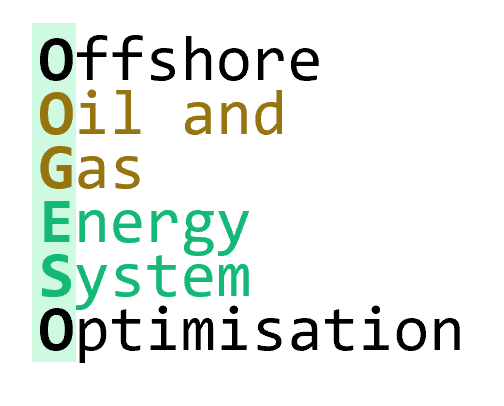Input data#
User guide: Home
Contents#
Other data:
Networks (nodes, edges)
Introduction#
The Oogeso input is an EnergySytemData object, that may be constructed programmatically, or specified in a YAML. This object or yaml file specifies all elements (nodes, edges, devices), how they are connected (network topology) and parameters for each element.
The input data can be specified in a YAML file with the following structure:
parameters:
<param>: <value>
profiles:
- id: timeseries1
data: <list of values>
data_nowcast: <list of values>
...
carriers:
- id: el
<param>: <value>
- id: heat
<param>: <value>
...
devices:
- id: device1
<param>: <value>
...
nodes:
- id: node1
<param>: <value>
- id: node2
...
edges:
- id: edge1
<param>: <value>
- id: edge2
...
The notation <param>: <value> above indicates a set of parameter-value pairs. The relevant parameters are described in the following:
General parameters (parameters)#
parameter |
type |
description |
|---|---|---|
time_delta_minutes |
int |
minutes per timestep |
planning_horizon |
int |
number of timesteps in each rolling optimisation |
optimisation_timesteps |
int |
number of timesteps between each optimisation |
forecast_timesteps |
int |
number of timesteps beyond which forecast (instead of nowcast) profile is used |
emission_intensity_max |
float |
maximum allowed emission intensity (kgCO2/Sm3oe), -1=no limit |
emission_rate_max |
float |
maximum allowed emission rate (kgCO2/hour), -1=no limit |
objective |
string |
name of objective function to use (penalty, exportRevenue, costs) |
piecewise_repn |
string |
method for impelementation of peicewise linear constraints in pyomo |
optimisaion_return_data |
list |
(optional) list of variables to return from simulation |
Time-series profiles (profiles)#
Multiple time-series profiles can be specified. For each profile there are two separate time-series: One representing forecasted values for planning ahead, and one representing the “nowcast” or an updated forecast relevant for the near-real-time decisions.
Note that the actual real-time values (e.g. of power demand or of available wind power) is not used in the simulation, as it only concerns up to near real-time operational planning. To address real-time deviations and balancing, reserve power and backup capacity is required.
Profiles may be specified in the YAML file as indicated above, or they may be read from separate files.
Note regarding the use of profiles
The max/min flow (\(Q\)) constraint (e.g. electric power output from a wind turbine, or power demand by a load) is generally written on the form \(Q_{min}\cdot \text{profile}(t) \le Q(t) \le Q_{max}\cdot \text{profile}(t)\), where \(Q(t)\) is the flow being constrained. That means you can choose where to put the units:
flow_maxgives the absolute value (e.g. MW) and the profile is given in relative units (typically in the range 0-1)flow_max = 1and the profile is given in absolute units (e.g. MW)
All examples use the first alternative.
